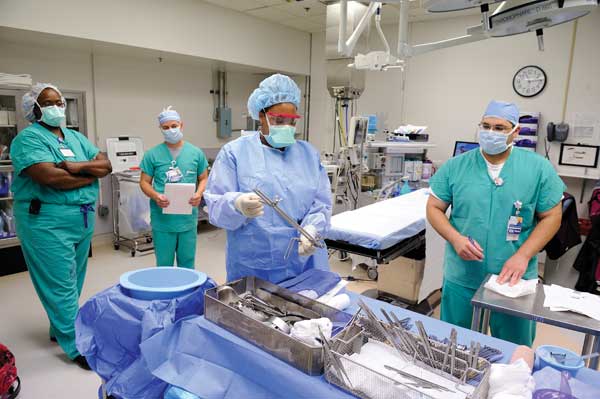Page Contents
OVERVIEW
How could someone miss a very important physical exam finding? Sometimes in our minds there are physical exam findings that seem so INTUITIVE and BASIC that we find it very difficult to fathom that other providers might miss them on their exam.

The case below helps explain one of these instances, and really highlights the importance of making sure one performs the physical exam themselves (and does not just rely upon what they have heard about the patient, or read in the chart).
WHAT HAPPENED?
The patient in question is a 50 year old woman with a past history of external hemorrhoids. She presents to the emergency room complaining of severe pain around her anus. The patient believes this pain to to be caused by her external hemorrhoids, and explains that while she has carried the diagnosis of hemorrhoids for a decade, she has never felt pain like this before. She is unable to sit down during the interview and instead stands.
When the anal region is inspected by the emergency room attending, it is noted that there is a large external hemorrhoids, however that it was not thrombosed, and could not explain the patients severe pain. It is decided that this patient would likely need exploration under anesthesia (in the operating room) to assess for the presence of an anal fissure (given that this would be the other likely cause of the patient’s presentation, and it could not be excluded from the differential by any other way).

I speaking with the ER attending about this case, the surgical attending decides to inspect the patient first before booking the operating room for her. When he inspects the patient’s anal region, he quickly sees what looks to be very clearly a thrombosed external hemorrhoid. When gently touching the hemorrhoid the patient comments on feeling immense pain, and it is clearly identified that this is the source of the patient’s presentation.
There no longer is a need for the patient to be examined under anesthesia, The thrombosed material in the hemorrhoid is removed immediately that day by the surgeon (in the outpatient clinic as a simple procedure), and the patient is able to go home shortly after it is completed.
AT WHAT POINT DID THE FOREST BECOME LOST IN THE TREES?
It seems that when the emergency room attending did the rectal exam, the “bigger picture” as to what is going on with the patient, became clouded. The severity of the patient’s pain perhaps eclipsed the presence of a fairly obvious (and large) thrombosed external hemorrhoid. The circumstances of this physical exam are not completely clear in retrospect, however it was clear to the physician that a fairly obvious physical exam finding was overlooked. Whats more the workup in the ER documented SPECIFICALLY that the external hemorrhoid of the patient was NOT thrombosed.
WHY SHOULD WE NOT THINK ITS COMPLETELY “CRAZY” THAT THIS HAPPENED?
Sometimes the emergency room can be a hectic place. It is of course possible (and to a certain degree expected) that there will be SOME frequency of simple/obvious mistakes that can be made in such a care setting. While this is not known for sure it is even possible that the rectal exam was completed by a provider who did not even truly know what a thrombosed external hemorrhoid looked like.
WHO CARES? WHAT WAS THE HARM IN WHAT HAPPENED?
Luckily in this case, the physicians decision to inspect the rectum BEFORE the OR procedure avoided any complications. That being said, had the patient been sent to the OR for examination under anesthesia that would have been very unfortunate. The cost, time, and risks of this type of procedure would all be unjustified given that the diagnosis could have been made with a routine rectal exam (and that the treatment could be done in the outpatient setting, with local anesthetic).
WHAT IS THE TEACHING POINT HERE? HOW DO WE AVOID THIS IN THE FUTURE?
There is both a GENERAL and SPECIFIC teaching point to be taken away from this case.
Make sure to repeat important parts of the physical exam yourself: it can be easy to rely on other people’s physical exams for the sake of time and efficiency, however the above case is NOT the only example of when this can lead to issues. Even when the findings in question are thought to be very OBVIOUS, if an important aspect of the patent’s care relies upon that physical exam finding, it is important to see it for yourself whenever you can.

Understand what a thrombosed external hemorrhoid looks like: reading the page on external hemorrhoids can help with this goal. Fundamentally some of the issues with the confusion regarding this patient’s exam might very well have stemmed from the misunderstanding of what exactly a thrombosed hemorrhoid might present like.
Page Updated: 10.07.2016